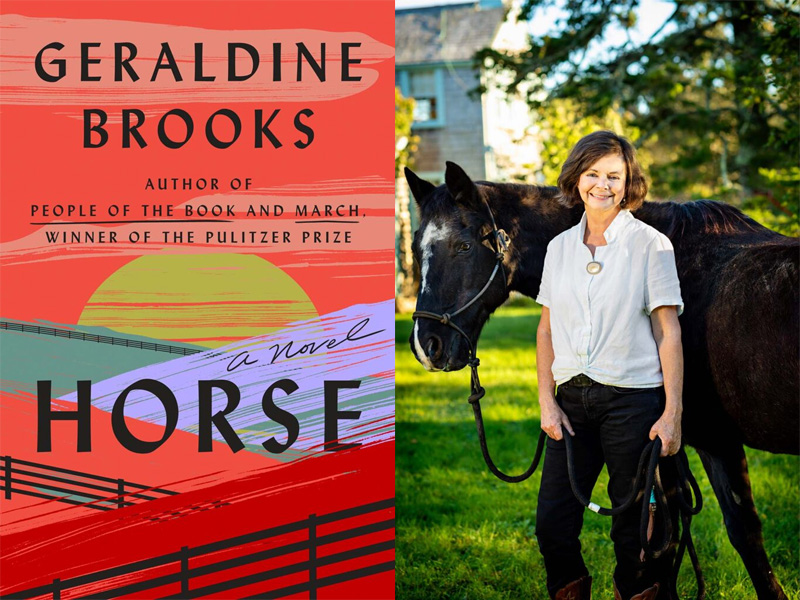Track down all the mysteries surrounding ‘Horse’

 (Sept. 22, 2022) — I am not horsing around when I tell you that this month’s must-read is Pulitzer Prize-winning author Geraldine Brooks’ newest novel, “Horse.”
(Sept. 22, 2022) — I am not horsing around when I tell you that this month’s must-read is Pulitzer Prize-winning author Geraldine Brooks’ newest novel, “Horse.”
Historical fiction doesn’t get much better. The novel begins in 2019 when a young Black man, a writer in a graduate program at Georgetown University, retrieves an old oil painting of a racehorse from his neighbor’s already picked-over curbside “free stuff.”
We all love a good mystery, and historical mysteries can be as enticing as any fictional murder mystery. In Chapter Two (still in 2019), we meet Jess, a young zoologist whose field is putting ancient bones together (articulating) for museum display purposes.
Her present job at the Smithsonian is putting together the newly arrived dismantled bones of a famous American racehorse that had been displayed long ago in a London museum.
Mystery unfolds
So, where’s the history if the story begins in 2019? Hold your horses.
The third chapter is “Warfield’s Jarret, The Meadows, Lexington, Kentucky, 1850.” The Meadows is a thoroughbred breeding farm owned by Dr. Warfield, widely known for his race-winning thoroughbreds.
And Jarret? Remember, this is pre-Civil War south. Warfield not only owns all the thoroughbreds on his farm, but he also owns slaves, and Jarret is the 5-year-old slave son of his Black horse trainer, Harry Lewis, who has purchased his own freedom. Black trainers and jockeys have deep roots in American horse racing.
In the same chapter, we witness the birth of a foal who will be called Darley. But in one of several ownerships, Darley will be renamed Lexington. Young Jarret will remain with Lexington until the horse’s death in 1875.
Brooks moves the Smithsonian side of the story between the years 2019 and 2020, with the backstory of all that research, scientific, historical and social, taking place in the South from 1850 all the way to 1875 in New York, N.Y.
Painting puzzle
The story is really a puzzle. Let’s start with the discarded painting of a thoroughbred racehorse. What is the horse’s name, and who is the painter? And who is the famous American racehorse whose bones are being studied before being articulated for display? And the importance of the painter who painted Darley as a foal?
What about the malformation of the horse’s left lateral, lacrimal bone? A blind racehorse? And the attempted theft of Lexington by Confederate outlaws? And the other painting of the same horse and his young Black groom?
How did Lexington escape the South to become a world-renowned stud, who can be found in the pedigree of Aristides, the first winner of the Kentucky Derby?
“Horse” is the continuing story of America’s love of horses, of horse racing and, sadly, racism.
Horse racing is still a hugely popular sport. Only now, we do not see any growth from its Black roots. Brooks has written a compelling and fact-based (Lexington’s Historical Connections) novel deserving of its own blanket of red roses.

Sunny Solomon
Sunny Solomon holds an MA in English/Creative Writing, San Francisco State University. She is a book reviewer for “The Clayton Pioneer” and her poetry and other writing has been published in literary journals, one chapbook, In the Company of Hope and the collection, Six Poets Sixty-six Poems. She was the happy manager of Bonanza Books, Clayton, CA and Clayton Books, Clayton, CA. She continues to moderate a thriving book club that survived the closure of the store from which it began. Sunny currently lives next to the Truckee in Reno, NV.
